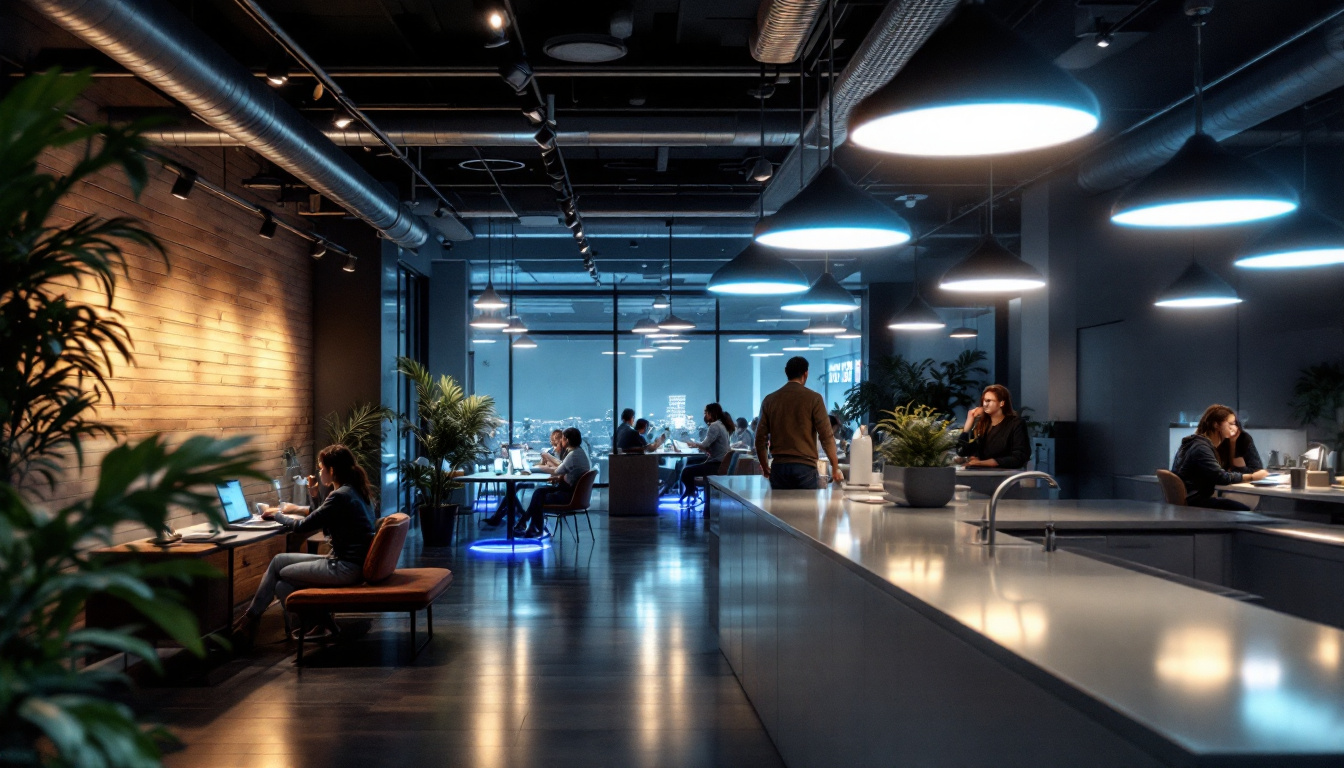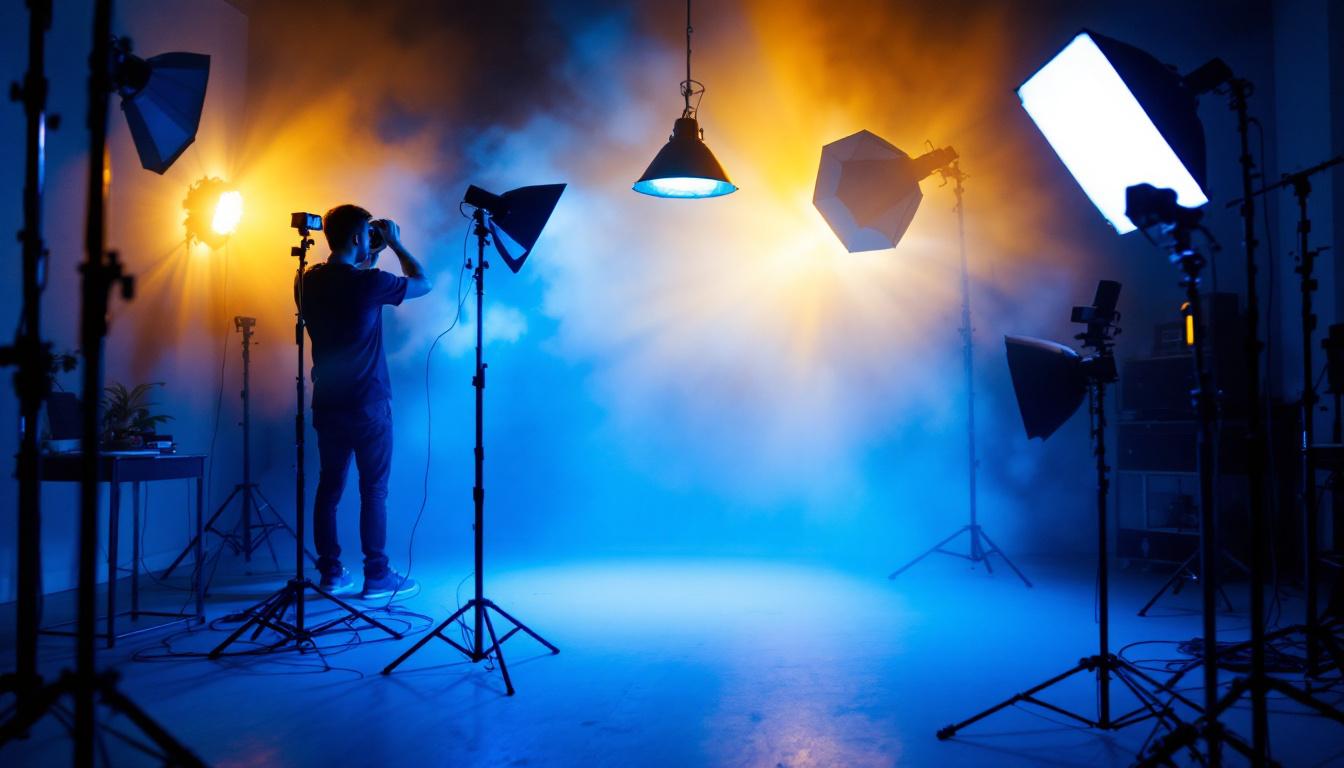
In the ever-evolving world of lighting technology, commercial LED light bulbs have emerged as a frontrunner for businesses looking to enhance their lighting solutions. With their energy efficiency, longevity, and adaptability, these bulbs not only meet current lighting needs but also pave the way for future advancements. This article explores how to effectively future-proof lighting projects using commercial LED light bulbs, ensuring that investments remain relevant and beneficial for years to come.
LED technology has transformed the lighting landscape, offering significant advantages over traditional incandescent and fluorescent options. The shift towards LED lighting is not merely a trend; it reflects a fundamental change in how lighting is viewed in commercial settings.
One of the most compelling reasons for adopting LED technology is its energy efficiency. LED bulbs consume significantly less energy compared to their incandescent counterparts, which translates into lower electricity bills. This reduction in energy consumption is not just beneficial for the environment; it also contributes to substantial cost savings for businesses.
Moreover, the longevity of LED bulbs—often lasting up to 25,000 hours or more—means that businesses will spend less on replacements and maintenance. This durability is particularly advantageous in commercial settings where lighting fixtures are often hard to reach or require specialized equipment for replacement. In addition to these financial benefits, the reduced frequency of bulb changes minimizes disruption in the workplace, allowing for a more consistent and pleasant environment for employees and customers alike.
As sustainability becomes a priority for many organizations, the environmental benefits of LED lighting cannot be overlooked. LEDs contain no toxic materials, such as mercury, and are fully recyclable, making them a responsible choice for environmentally-conscious businesses. By choosing LED lighting, companies can significantly reduce their carbon footprint and contribute to a greener future.
Additionally, the reduced energy consumption associated with LED lighting leads to lower greenhouse gas emissions, further enhancing their appeal as a sustainable lighting solution. The impact of this shift is particularly noticeable in urban areas, where the cumulative effect of widespread LED adoption can lead to significant improvements in air quality and energy conservation. Furthermore, many municipalities are now incentivizing the transition to LED lighting in public spaces, recognizing the dual benefits of cost savings and environmental responsibility. This collective movement not only enhances the aesthetic appeal of cities but also fosters a culture of sustainability that resonates with residents and visitors alike.
When considering LED light bulbs for commercial projects, it is essential to understand the key features that set them apart from traditional lighting options. These features not only enhance the functionality of the lighting but also contribute to the overall aesthetic and operational efficiency of commercial spaces.
Commercial LED light bulbs come in a variety of color temperatures, ranging from warm white to cool daylight. This versatility allows businesses to select the appropriate lighting for different environments, whether it be a cozy restaurant setting or a bright retail space. The ability to choose the right color temperature can significantly impact customer experience and employee productivity.
Furthermore, the quality of light produced by LEDs is often superior to that of traditional bulbs. LEDs provide consistent illumination without flickering, which can reduce eye strain and create a more comfortable atmosphere for both employees and customers. This is particularly important in environments where precise tasks are performed, such as in design studios or manufacturing facilities, where color accuracy and clarity are crucial.
Dimming capabilities are another essential feature of commercial LED light bulbs. The ability to adjust the brightness of lighting can enhance the ambiance of a space and improve energy efficiency. Dimming not only allows for greater flexibility in lighting design but also contributes to energy savings by reducing power consumption during off-peak hours.
Moreover, the integration of smart technology with dimmable LEDs offers even greater control over lighting systems. Businesses can automate lighting schedules, adjust brightness remotely, and even sync lighting with other smart devices, further enhancing operational efficiency. This integration can also lead to improved security measures, as lights can be programmed to simulate occupancy during non-business hours, deterring potential intruders.
Additionally, the longevity of LED bulbs means that maintenance costs are significantly reduced. Traditional bulbs often require frequent replacements, which can be disruptive and costly for businesses. In contrast, commercial LEDs typically have a lifespan of up to 25,000 hours or more, allowing businesses to focus on their operations without the constant worry of lighting failures. This durability also contributes to sustainability efforts, as fewer bulbs end up in landfills, aligning with the growing emphasis on environmentally responsible practices in the commercial sector.
Future-proofing lighting projects involves strategic planning and consideration of emerging technologies and trends. By taking proactive steps, businesses can ensure that their lighting solutions remain relevant and effective in the years to come.
Smart lighting technology is rapidly gaining traction in commercial settings. By integrating smart LEDs with advanced control systems, businesses can optimize their lighting for energy efficiency, convenience, and adaptability. These systems allow for remote management, automated schedules, and real-time monitoring, enabling businesses to respond quickly to changing needs.
Investing in smart lighting solutions not only enhances operational efficiency but also positions businesses to take advantage of future advancements in lighting technology. As smart cities and IoT (Internet of Things) become more prevalent, having a smart lighting infrastructure in place will be a significant asset. Moreover, these systems can be programmed to adjust based on occupancy or natural light levels, further reducing energy consumption and costs. The integration of sensors and data analytics can provide valuable insights into usage patterns, allowing businesses to make informed decisions about their lighting strategies.
When planning a lighting project, it is crucial to consider the modularity and scalability of the lighting system. Commercial LED light bulbs can be easily integrated into existing systems, allowing businesses to expand or modify their lighting solutions as needed. This flexibility is particularly important for growing businesses that may require changes in their lighting setup over time.
By choosing modular lighting solutions, businesses can avoid the costs and disruptions associated with complete overhauls. This approach not only saves money but also ensures that the lighting system can evolve alongside the business. Furthermore, modular systems can facilitate the incorporation of new technologies as they emerge, such as tunable white lighting or circadian rhythm-based systems that promote well-being and productivity among employees. The ability to adapt and upgrade components without a full system replacement can significantly extend the lifespan of the lighting infrastructure, making it a wise investment for the future.
Successfully implementing LED lighting in commercial spaces requires careful planning and execution. A well-thought-out strategy can maximize the benefits of LED technology and ensure a smooth transition.
Before making any changes, conducting a thorough lighting audit is essential. This audit involves assessing the current lighting setup, identifying areas for improvement, and determining the specific needs of the space. By understanding the existing conditions, businesses can make informed decisions about the type and quantity of LED bulbs required.
A lighting audit can also highlight opportunities for energy savings and efficiency improvements. By analyzing usage patterns and identifying underutilized areas, businesses can optimize their lighting strategy for maximum impact.
Collaborating with lighting professionals can significantly enhance the success of an LED lighting project. These experts can provide valuable insights into the latest technologies, trends, and best practices in commercial lighting. They can also assist in designing a lighting plan that meets the specific needs of the business while ensuring compliance with relevant regulations and standards.
By leveraging the expertise of lighting professionals, businesses can avoid common pitfalls and make informed decisions that contribute to the long-term success of their lighting projects.
While LED lighting systems are known for their durability and low maintenance requirements, regular upkeep is still essential to ensure optimal performance. Implementing a maintenance plan can extend the lifespan of LED bulbs and maximize their energy efficiency.
Conducting regular inspections of the lighting system is crucial for identifying potential issues before they escalate. This includes checking for any flickering lights, damaged fixtures, or signs of wear and tear. Addressing these issues promptly can prevent costly repairs and ensure that the lighting remains effective.
Additionally, regular inspections can help businesses stay informed about the latest advancements in LED technology. As new products and solutions become available, businesses can evaluate whether upgrades or replacements are necessary to maintain optimal performance.
Keeping LED fixtures clean is an often-overlooked aspect of maintenance. Dust and grime can accumulate on fixtures, reducing light output and efficiency. Regular cleaning of light fixtures, lenses, and surrounding areas can significantly enhance the performance of the lighting system.
Furthermore, businesses should also consider the lifespan of their LED bulbs. While LEDs have a long lifespan, they do not last indefinitely. Keeping track of when bulbs were installed and planning for replacements can prevent unexpected outages and ensure consistent lighting quality.
Commercial LED light bulbs represent a significant advancement in lighting technology, offering numerous benefits for businesses looking to future-proof their lighting projects. By embracing energy efficiency, sustainability, and smart technology, organizations can create adaptable lighting solutions that meet their current needs while preparing for future developments.
Through careful planning, collaboration with lighting professionals, and a commitment to regular maintenance, businesses can ensure that their lighting systems remain effective and relevant for years to come. Investing in commercial LED lighting is not merely a choice for today; it is a strategic decision that lays the groundwork for a brighter, more efficient future.
Ready to elevate your lighting projects with the efficiency and sustainability of LED technology? At LumenWholesale, we provide contractors with the highest quality, spec-grade LED lighting products at unbeatable wholesale prices. Say goodbye to local distributor markups and hello to our extensive selection that meets rigorous industry standards. With free shipping on bulk orders, you can secure premium lighting solutions at the best value — all without hidden fees. Make your next project shine brighter, last longer, and contribute to a greener future. Discover wholesale lighting at the best value today and join the future of commercial lighting with LumenWholesale.

Discover how lighting contractors are transforming spaces with innovative electrical switches and outlets.

Discover essential tips and common pitfalls for lighting contractors with our guide on American-made lighting.

Discover expert insights from top lighting contractors on choosing and installing solar lighted address signs.

Discover the essentials of Shat R lighting in this comprehensive guide.